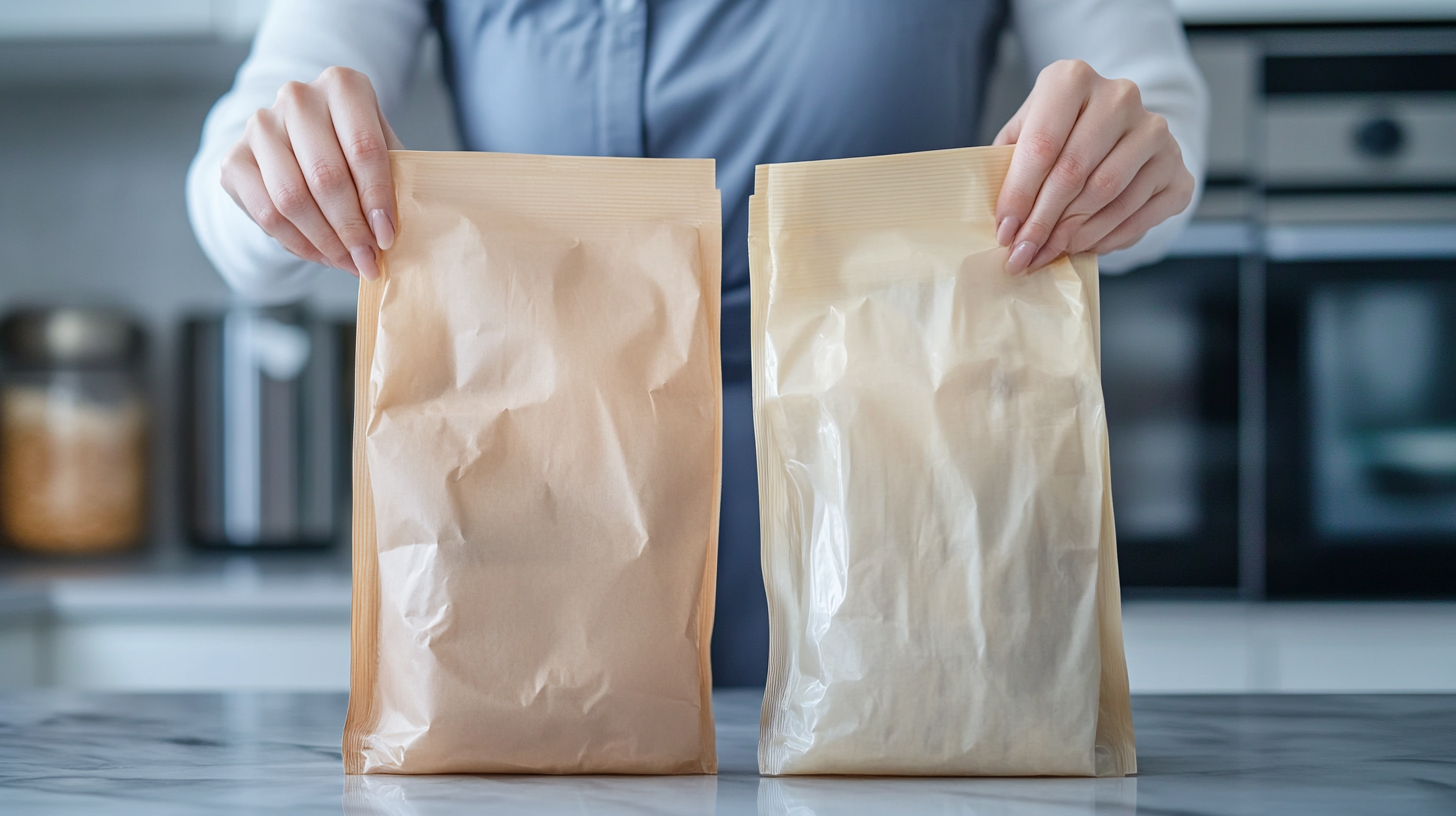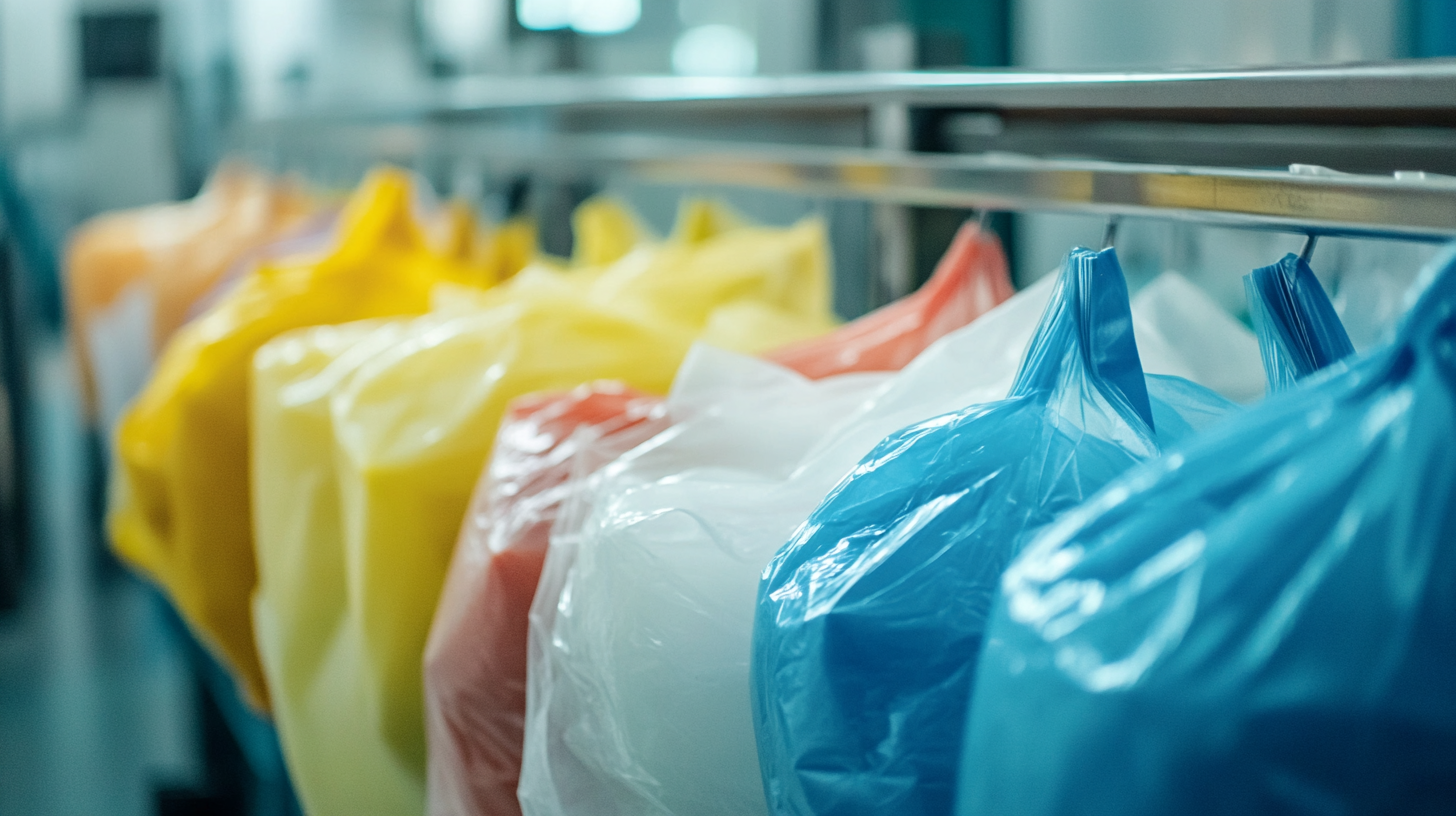In the ever-evolving world of packaging solutions, the choice between Paper Vacuum Bags and Plastic Vacuum Bags has garnered significant attention from both consumers and industry experts. According to recent market research, the global vacuum packaging market is projected to reach $32 billion by 2026, with growing concerns over environmental sustainability driving a shift toward eco-friendly options. Paper Vacuum Bags, revered for their biodegradable properties, are becoming increasingly popular among environmentally conscious consumers, with reports indicating that they can reduce plastic waste by up to 60% when used for food packaging. On the other hand, Plastic Vacuum Bags, known for their durability and moisture resistance, continue to dominate in sectors requiring longer shelf life and protection from external elements. Understanding the distinct characteristics and applications of these two types of vacuum bags is crucial for making informed decisions that align with both practical needs and environmental responsibilities.

Paper vacuum bags are widely recognized for their eco-friendliness and effective airflow management, making them a popular choice in various industries. According to a recent report from the Institute of Packaging Professionals, over 60% of consumers are now prioritizing sustainable packaging options, and paper vacuum bags often meet these demands. They are typically made from recycled materials, ensuring a lower carbon footprint compared to plastic alternatives. Additionally, their breathable nature allows moisture and air to escape, which is crucial for preserving food quality without the risk of spoilage associated with plastic bags.
However, the limitations of paper vacuum bags must also be considered. While they excel in breathability, they are not as durable or moisture-resistant as plastic vacuum bags. A study published in the Journal of Food Science found that paper bags had higher rates of tearing, with a 30% failure rate under stress conditions compared to only 10% for plastic alternatives. This can lead to contamination and spoilage risks, particularly in wet environments. Furthermore, paper bags may not provide the same level of vacuum seal, which affects the longevity of stored items. Thus, while paper vacuum bags offer significant environmental benefits, they may fall short in terms of durability and protective performance.

When we consider the environmental impact of vacuum bags, the distinction between paper and plastic becomes crucial. Paper vacuum bags are often praised for their biodegradability and lower carbon footprint during production. Made from natural fibers, these bags decompose more efficiently in landfills, returning nutrients to the soil and reducing overall waste accumulation. As consumers become more conscious of their environmental footprint, opting for paper bags over their plastic counterparts can be a simple yet effective choice in reducing plastic pollution.
In contrast, plastic vacuum bags, while often more durable and moisture-resistant, pose significant environmental challenges. They are typically derived from petroleum, a non-renewable resource, and their production involves high energy consumption. Moreover, plastic bags take hundreds of years to decompose, contributing to the growing problem of microplastics in our ecosystems. When discarded improperly, these bags can end up in oceans and waterways, threatening marine life and entering the food chain. By raising awareness of these issues, we can encourage more sustainable choices in our everyday lives, emphasizing the urgent need to shift towards eco-friendly alternatives like paper vacuum bags.
This chart compares the environmental impact of paper vacuum bags versus plastic vacuum bags based on criteria such as biodegradability, carbon footprint, and recyclability.
When it comes to choosing between paper and plastic vacuum bags, durability and strength are paramount considerations. According to a report by the Flexible Packaging Association, plastic vacuum bags exhibit a greater tensile strength compared to their paper counterparts, allowing them to withstand higher pressure and extend the shelf life of food products by up to 5 times longer. This is particularly crucial for preserving moisture-sensitive items, where a strong barrier is required to prevent spoilage.
On the other hand, paper vacuum bags offer a unique advantage in terms of eco-friendliness and breathability. The American Forest & Paper Association indicates that paper products are typically biodegradable and have a lower carbon footprint during production. While their strength may not match that of plastic, innovations in paper technology have led to the development of reinforced paper bags that can support up to 50 pounds, making them a viable option for dry goods. Ultimately, the choice between paper and plastic vacuum bags hinges on specific needs, whether that be strength for durability or sustainability for environmental impact.

When comparing the costs of paper vacuum bags and plastic vacuum bags, it's essential to understand not just the initial price but also the broader environmental implications. Paper vacuum bags are often perceived as the more sustainable choice due to their biodegradable nature. However, they tend to be more expensive upfront than their plastic counterparts. The production process for paper bags can lead to higher water and carbon footprints, especially when sourced from non-sustainable practices.
On the other hand, plastic vacuum bags are generally cheaper and more widely available, making them a popular choice among consumers. Yet, recent discussions about the environmental costs of plastic packaging highlight significant issues, particularly plastic pollution and its impact on marine ecosystems. With growing concerns over plastic waste, businesses are now reevaluating their packaging strategies. This shift includes considering alternatives and interventions to promote reusable options, which may incur initial costs but offer long-term benefits. Understanding these financial and environmental dimensions is critical for informed decision-making in packaging choices.
| Type of Vacuum Bag | Material | Average Cost per Bag | Durability | Environmental Impact | Ideal Use Case |
|---|---|---|---|---|---|
| Paper Vacuum Bags | Recycled Paper | $0.50 | Moderate | Biodegradable | Home Use, Light Cleaning |
| Plastic Vacuum Bags | Polyethylene | $0.75 | High | Non-biodegradable | Commercial Use, Heavy Cleaning |
In the food industry, choosing the right vacuum packaging solution is crucial for preserving freshness and preventing spoilage. Paper vacuum bags are often favored for their breathability, making them ideal for items like cheeses and cured meats, which benefit from a slight exchange of air. These bags are biodegradable, adding an eco-friendly component that appeals to environmentally conscious businesses and consumers alike. When it comes to presentation, paper bags offer a more artisanal look, enhancing the perceived value of gourmet products.
On the other hand, plastic vacuum bags provide a superior airtight seal, making them perfect for wet or moist items such as marinated meats, soups, or even bulk grains. Their versatility extends to convenience, especially when using tools like the Easy Sealer, a compact handheld device that ensures an airtight seal on various bags, maintaining the food's flavor and texture. As food safety and longevity become increasingly important, understanding the strengths of each type of bag can help industry players make informed choices that align with their product offerings and market demands.
This chart illustrates the distribution of usage between paper vacuum bags and plastic vacuum bags within the food industry, highlighting the preference for plastic bags due to their durability and sealing capabilities.
